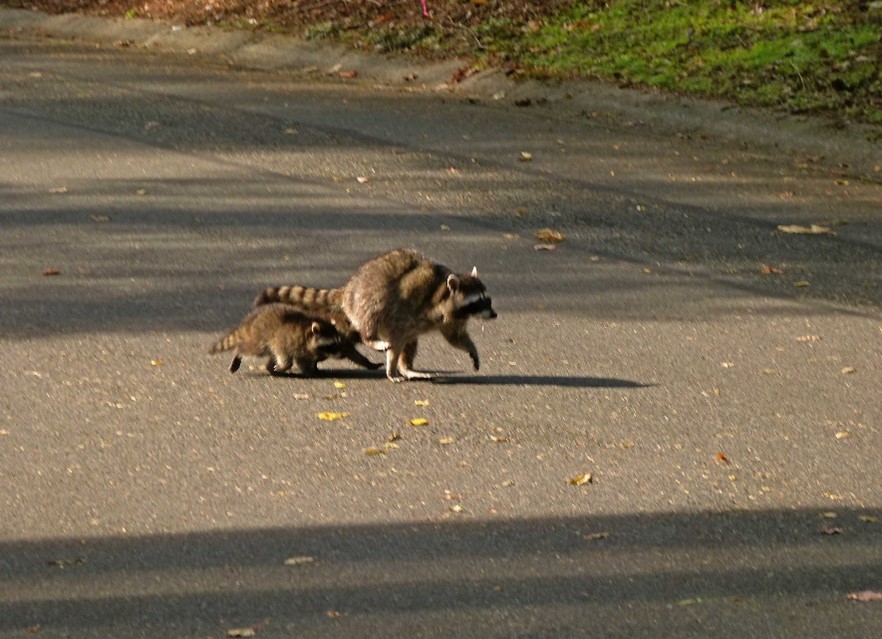A Semiahmoo resident contacted our General Manager and Maintenance Director regarding his experience with wildlife invading his attic. Live raccoons, deceased skunks and nesting materials, feces, and urine were found in the attic. The raccoon was enticed out with bait and departed alive. The homeowner wanted to share with the community what he learned from this experience. The Environmental Committee would like to add information to help homeowners keep their homes free from uninvited live-in guests.
Why do animals enter our homes? Skunks, mice, rats, raccoons, and bats are the most common species seeking shelter in homes. They may stay for a brief time, if they find food available, and leave when the food is exhausted. They may be seeking shelter from the weather and will overwinter in our home, or they may be a female looking for a safe place to raise babies.
How do they get in? According to Maintenance Director Dan Rudolph, many entrance points are due to poor construction practices and are unnecessary. Typical entry points are “crawlspace openings, vent penetrations, connections of opposing roof lines, soffit and gable end spaces or penetrations and the transitions from foundations to the framing.” Necessary or not, these openings should be covered with heavy galvanized wire mesh to keep animals out.
When and how should wildlife be removed? If available food is attracting animals, removing the food source may be sufficient to encourage them to leave. If the animals are overwintering, and no young are involved, contact a wildlife removal service. The longer the animals stay, the more damage will be done to insulation, walls, and floorboards. The company you contact should offer a live-trap and removal service, and should have experience in finding and sealing entrance points. The homeowner who contacted the SRA stated that while some companies will remove almost any wildlife, he couldn’t find any that would remove raccoons. The Washington State Fish and Wildlife Service doesn’t remove wildlife from homes, but may give you contact information for companies that will do this. If the problem animals are a mother and young, don’t attempt to deal with removal yourself, but contact a reputable wildlife removal company to do so. Mothers will either vigorously defend or abandon their young if harassed, and this causes harm to the animals and humans involved, and if the young aren’t successfully removed and reunited with their mother, you’ll have dying animals in your home. If the mother and babies are caught but can’t be reunited, call NW Wildlife at (360) 966-8845 to take possession of and care for the babies.
What are the risks with wildlife in our homes? Aside from property damage caused by urine, feces, nesting debris, food caches, etc., wildlife in Washington State can carry zoonotic diseases (diseases passed from animals to humans). Some are quite serious. Contacting a licensed wildlife removal service is the safest option for homeowners. Rabies is the most serious zoonotic disease and it is invariably fatal if untreated. It’s most commonly found in bats in Washington, but can be found in almost any mammal. ANY bite from a wild animal or from a pet not proven to be vaccinated against rabies requires a call to your health care provider to assess the potential for and possible prophylactic treatment for rabies. Baylisascaris or Raccoon Roundworm is found in raccoon feces and can be spread to pets or humans who have contact with the feces. It has caused fatalities in America. Less common zoonotic diseases including Hantavirus (primarily spread by mice), Giardiasis (usually contracted through infected water), and Leptospirosis.
In Summary: One of the advantages of living in this beautiful place is the opportunity to observe and share our lives with wildlife. However, just as they don’t want us in their burrows or nests, we don’t want them in our homes. Keeping animals from living in our homes by preventing ways to get in, and removing them safely and carefully when they do, allows all of us to co-exist. Prevention is far better than removal. You may want to contact a wildlife removal company to inspect your home for openings which could allow wildlife to enter, and have them block those entry points.
There’s a copy of “Living With Wildlife in the Pacific Northwest”, by Russell Link, in the SRA office for any resident to reference if needed. It’s a useful book that will answer almost any question you might have about living with wildlife here.

